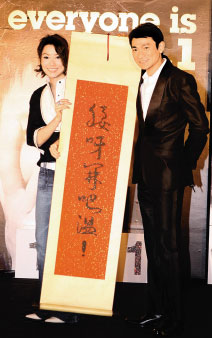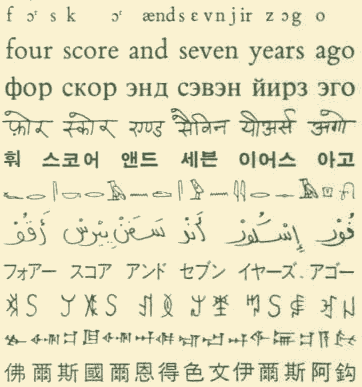The latest rerelease from Sino-Platonic Papers is The Sino-Alphabet: The Assimilation of Roman Letters into the Chinese Writing System (2.3 MB PDF), by Mark Hansell. This was first published in May 1994. Since then, of course, Roman letters have come to be used even more widely in texts written otherwise in Chinese characters.
Here is the introduction:
One of the most striking changes in written Chinese in recent years is the increasingly common use of the Roman alphabet in both loanwords and native coinages. To modern urbanites, vocabulary such as MTV, PVC, kǎlā OK, and B xíng gānyán are not exotica, but are the stuff of everyday life. The explosion of alphabetically-written lexical items is made possible by the systematic assimilation of the Roman alphabet into the standard repertoire of Chinese reader/writers, to create what I have called the “Sino-alphabet”. This paper explores both the formal structure and the function of the Sino-alphabet. Structurally, the Sino-alphabet represents the adaptation of the English alphabet to the Chinese system in terms of 1) discreteness and 2) directionality. Chinese characters (henceforth “Sinograms”) are “discrete” in that each graph represents an independent chunk of phonological material, influenced very little by its neighbors. Roman letters, in contrast, are non-discrete because only in combination with other letters can they form meaningful units of speech. The use of Roman letters as fully discrete entities sets the Sino-alphabet apart from the Roman alphabet as used in other languages, and makes possible its assimilation into the Chinese writing system. In terms of directionality, the Sino-alphabet exhibits the full range of options that are present in Chinese: left-to-right, top-to-bottom, and right-to-left; while the traditional Roman alphabet as used in the West never allows the right-to-left direction.
The main function of the Sino-alphabet has been the adaptation of graphic loans from English. Graphic borrowing has a long tradition in Chinese; for example, graphic loans from Japanese have contributed a great deal to the modern Chinese lexicon (e.g. 科學, 經濟, 幹部 and hundreds of others). The emergence of English as the main source of loan vocabulary, as well as schooling that has exposed the mass of the population to the Roman alphabet, laid the groundwork for graphic borrowing of English vocabulary .Increasing graphic borrowing solidified the position of the Sino-alphabet, which in turn made possible more borrowing. Now firmly established, the Sino-alphabet is available for other functions such as transliteration of foreign or dialectal sounds.
The adaptation of Roman letters into the Chinese system would seem to highlight the difference between alphabetic and morpho-syllabic types of writing systems. Yet it also shows that Roman letters are not inherently alphabetic, and can quite easily change type when borrowed. Throughout the history of writing, the creativity and flexibility of writers and readers have overcome radical structural differences between writing systems and between languages. The development of the Sino-alphabet is proof that the peculiar structure of the Chinese writing system presents no impediment to the internationalization of the Chinese language.
This is issue no. 45 of Sino-Platonic Papers.

 Joel of Danwei has posted about an interesting calligraphy scroll presented to Hong Kong superstar Andy Lau.
Joel of Danwei has posted about an interesting calligraphy scroll presented to Hong Kong superstar Andy Lau. 